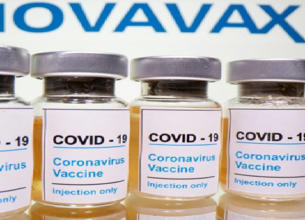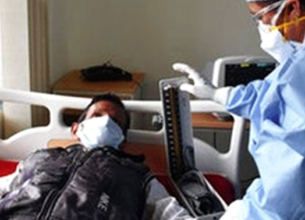CORONAVIRUS
28, Jan 2020

Prelims level : Medicine and Pharmaceuticals
Mains level : GS-III Disaster and Disaster Management.
Context:
- China is struggling to contain the spread of a new virus that has claimed at least six lives so far since 31st December. Almost 300 people have been hospitalised. Worryingly enough doctors have confirmed that the infection is spreading Rapidly Among Humans.
The Coronavirus Contagion:
- The Coronavirus outbreak has triggered memories of SARS or severe acute respiratory syndrome, which originated in China in 2002,
- By 2003 it infected more than 8,000 people and killed 774 in a pandemic that ripped through Asia.
- The present Coronavirus, was first detected in Wuhan city that has cancelled the upcoming Lunar New Year celebrations, where hundreds of thousands of people were expected to gather.
- Chinese doctors believe the disease is spreading far more easily than it was thought previously.
What Is a Coronavirus?
- Coronaviruses were first identified in the 1960s
- They get their name from their crown-like shape. Sometimes, but not often, a coronavirus can infect both animals and humans.
- Most coronaviruses spread the same way other cold-causing viruses do:
- Through infected people coughing and sneezing,
- By touching an infected person’s hands or face, or
- By touching things such as door knobs that infected people have touched.
- Almost everyone gets a coronavirus infection at least once in their life, most likely as a young child.
- In the United States, coronaviruses are more common in the fall and winter, but anyone can come down with a coronavirus infection at any time.
Common Human Coronaviruses:
- Common human coronaviruses, including types 229E, NL63, OC43, and HKU1, usually cause mild to moderate upper-respiratory tract illnesses, like the common cold.
- Most people get infected with these viruses at some point in Their Lives.
Other Human Coronaviruses:
- Two other human coronaviruses, MERS-CoV and SARS-CoV have been known to frequently cause severe symptoms.
- MERS symptoms usually include fever, cough, and shortness of breath which often progress to pneumonia.
- About 3 or 4 out of every 10 patients reported with MERS have died. MERS cases continue to occur, primarily in the Arabian Peninsula.
- SARS symptoms often included fever, chills, and body aches which usually progressed to pneumonia.
- No human cases of SARS have been reported anywhere in the world since 2004.
Treatment:
- There are no specific treatments for illnesses caused by human coronaviruses.
- Most people with common human coronavirus illness will recover on their own.
2019 Novel Coronavirus (2019-nCoV):
- It is a virus (more specifically, a coronavirus) identified as the cause of an outbreak of respiratory illness first detected in Wuhan, China.
- Early on, many of the patients in the outbreak in Wuhan, China reportedly had some link to a large seafood and animal market, suggesting animal-to-person spread.
- However, a growing number of patients reportedly have not had exposure to animal markets, suggesting person-to-person spread is occurring.
- At this time, it’s unclear how easily or sustainably this virus is spreading between people.
















